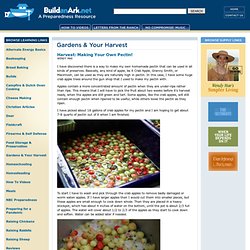

How to render lard. Lard.

I have to admit that for most of my life that I’ve been terrified of the stuff. Be it schoolyard taunts that used the word, or the absence of it at both the grocery store and in my childhood home—I believed that it was bad news and something to be avoided. A few years ago, I embarked on a quest to teach myself how to make flour tortillas. The first recipe I found listed lard as a key ingredient. I was scared at first, but I sought out a pound of it as my love for flour tortillas triumphed over my fear of pig fat. People think that cooking with lard will make everything taste of pork, but this is not true; its flavor is neutral. But the best thing about lard is that it’s not bad for you. And that, my friends, is the problem. For years, I heard stories about how difficult and malodorous the lard-rendering process was.
When I returned to New York I decided it was time to render my own lard. If you’ve never rendered lard before, trust me, it’s very, very easy. All Butter Crust (Pâte Brisée) 1 The minute you even think you might want to make a pie crust, cut up a stick of butter into smallish (about 1/2-inch) cubes, and put it into the freezer.

The colder the butter the better luck you'll have with creating a flaky crust. Freeze the butter at least 15 minutes, better an hour, best overnight. (I usually keep cubed butter in the freezer ready to go for making pie crusts.) 2 Place the flour, salt, and sugar into a food processor and pulse until well combined. Add half of the butter cubes and pulse 6 to 8 times. 3 Add a couple of tablespoons of ice cold water (without the ice!) 4 Remove the crumbly mixture from the food processor and place on a very clean, smooth surface. 5 When you are ready to roll out the dough, remove the disk from the refrigerator and place on a clean, smooth, lightly floured surface. DIY Pectin! Harvest: Making Your Own Pectin!

Wendy Mae I have discovered there is a way to make my own homemade pectin that can be used in all kinds of preserves. Basically, any kind of apple, be it Crab Apple, Granny Smith, or Macintosh, can be used as they are naturally high in pectin. In this case, I have some huge crab apple trees around the gun shop that I used to make my pectin with. Apples contain a more concentrated amount of pectin when they are under-ripe rather than ripe.
I have picked about 18 gallons of crab apples for my pectin and I am hoping to get about 7-8 quarts of pectin out of it when I am finished. To start I have to wash and pick through the crab apples to remove badly damaged or worm eaten apples. Over medium to low heat I cook down the crab apples, stirring occasionally, until they have broken their skins and are mushy. Here is a photo of a fresh batch of poured apples on the left and a batch that has been sitting for 30 minutes on the right. This pectin is now ready to use: